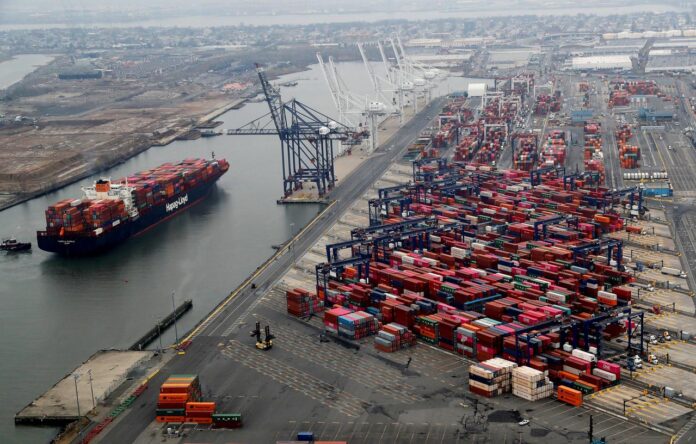WASHINGTON: The US current account deficit dipped to a near two-year low in the first quarter as the Covid-19 pandemic restricted the flow of goods and services, while companies continued to repatriate profits back home.
The Commerce Department said on Friday the current account deficit, which measures the flow of goods, services and investments into and out of the country, slipped 0.1pc to $104.2 billion, the smallest since the second quarter of 2018. A drop in imports and income payments narrowly outpaced a decline in exports and income receipts.
Data for the fourth quarter was revised to show the gap narrowing to $104.3 billion, instead of $109.8 billion as previously reported. Economists polled by Reuters had forecast the current account gap shrinking to $103 billion in the January-March quarter.
The current account gap represented 1.9pc of gross domestic product in the first quarter, the smallest share since the third quarter of 2017.
“The figures reinforce a dire outlook for trade, and we expect import and export volumes to drop at record rates this year,” said James Watson, a senior US economist at Oxford Economics in New York. “With global demand falling further than domestic demand, we expect the current account to widen sharply in the second quarter.”
The Commerce Department’s Bureau of Economic Analysis, which compiles the data, attributed the drop “in part, due to the impact of Covid-19, as many businesses were operating at limited capacity or ceased operations completely, and the movement of travellers across borders was restricted.”
Exports plunged to a 10-year low in April, which economists said set up the current account deficit to widen to as much as $120 billion in the second quarter.
In the first quarter, exports of goods and services and income received from foreign residents fell $47.5 billion, the biggest drop in 11 years, to $902.2 billion. That was the lowest level since the third quarter of 2017.
Imports of goods and services and income payments to foreign residents declined $47.7 billion to $1.01 trillion, also the lowest level since the third quarter of 2017. That drop was also the biggest since the first quarter of 2009.
PROFITS REPATRIATED
Despite the disruptions caused by the pandemic, American companies repatriated $124.2 billion in profits in the first quarter, the most in over a year, up from $83.6 billion in the prior period.
A surge in repatriations in 2018 was fueled by a Republican tax overhaul, which reduced much of the tax liability for bringing back earnings from foreign subsidiaries, although the flows subsided substantially in 2019.
A large portion of the repatriated money funded stock buybacks and dividends. It was not immediately clear whether the surge in the first quarter was directly a result of US companies’ need to shore up their domestic balance sheets.
In the early stages of the coronavirus crisis, however, activity in corporate funding markets all but dried up, and companies broadly tapped into whatever sources of liquidity were available.
Even before the Covid-19 pandemic, the import bill had been shrinking because of the Trump administration’s trade war with China. The United States has also become a net exporter of crude and fuel, the result of a production surge that has dramatically reduced the nation’s dependence on foreign oil.
Goods trade with China collapsed in the first quarter.
Investment income also took a hit last quarter as COVID-19 restrictions impacted earnings.
The surplus on primary income – which includes investment income such as dividends and employee compensation – dropped to $52.5 billion, the smallest since the third quarter of 2016, from $62 billion in the fourth quarter. There was a record drop in foreign direct investment.
Primary income receipts fell $27.8 billion to $255.1 billion. The deficit on secondary income, which includes US government grants, pensions, fines and penalties, and worker remittances, increased $1.1 billion to a record $37.6 billion.
The Federal Reserve’s expansion of currency swap lines with more than a dozen foreign central banks to ease a global dollar crunch early in the crisis contributed to record increases in assets and liabilities in the US financial account.




